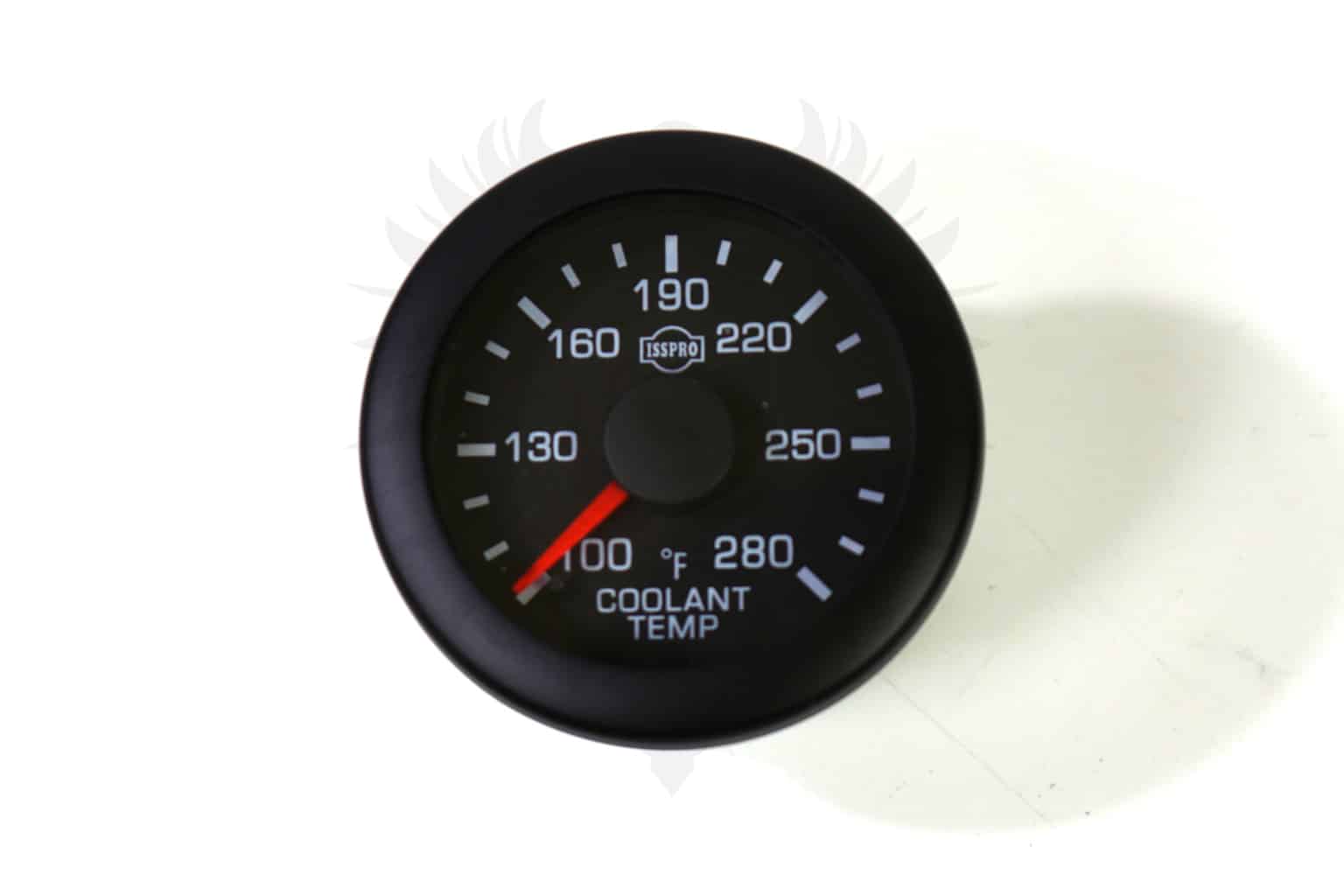
Coolant temperature gauge professional#
You have to take out this intake plenum to have access to it and hiring a professional mechanic is the safest bet so you don’t damage your engine. This setup may vary based on car models but remains more common amongst modern cars.įor trucks, however, the temperature sensor could be found close to the metal cylinder at the engine block (intake plenum). To locate the thermostat housing, you follow the hose that goes from the radiator into the engine.Īt the end of this hose is the thermostat housing, and beside this is typically the temperature sensor. The temperature sensor is usually a small black device located close to the thermostat housing.

This is the basic process of testing a temperature gauge with a multimeter, but there is a lot more to it. Dip the sensor in hot and cold water, and check the voltage readings on the multimeter. Set your multimeter to DC voltage, take out the temperature sensor from your vehicle, place the red probe on the far right terminal, and place the black probe on the far left terminal.
Coolant temperature gauge how to#
How To Test A Temperature Sensor With A Multimeter To test a temperature sensor, you will need: There are two methods of testing a coolant temperature sensor and these methods have their specific tools and equipment. Keeping these conditions for a long time may result in your engine getting damaged. These range from black smoke coming out of the exhaust pipe to poor vehicle mileage, bad engine idling, and overall poor engine performance. This means that, when the temperature sensor is bad, there will be difficulty starting the engine due to poor ignition timing.Ī bad temperature sensor causes bad fuel injection into the engine, which leads to a whole lot of other symptoms. The engine keeps heating up till it becomes overheated, and this could cause a fire hazard.Īs mentioned earlier, the ECU also makes use of data from the temperature sensor to time ignition.

Symptoms Of A Bad Temperature Sensorĭue to the role a coolant temperature sensor plays in the engine and how it affects the functions of an ECU, the symptoms of a bad sensor are easy to identify.Ī faulty temperature sensor may send a permanent hot signal to the ECU, which means that when the engine needs cooling, there is no appropriate response from the ECU and the fan is never switched on. In some vehicles, the data from the temperature sensor is also used to trigger the engine cooling fan on and off, or supplied to a gauge on the car dashboard. The ECU uses the data from the temperature sensor for proper fuel injection adjustment and ignition timing. When measuring temperature, the coolant sensor sends either a hot signal or a cold signal to the Engine Control Unit (ECU), and the ECU uses these signals to perform several activities.

What Is A Temperature Sensor?Ī temperature sensor, or coolant temperature sensor, is a component within a vehicle that measures the temperature in the engine. Without wasting time, let’s get right in. If your answer to these is yes, then your temperature sensor could be the culprit, and you need to run tests on it to determine if it needs to be changed or not. Is the temperature gauge on your dashboard stuck at cold or hot?Īre you additionally experiencing poor vehicle idling and difficulty starting your engine?


 0 kommentar(er)
0 kommentar(er)
